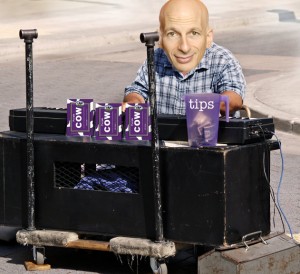Advertisers on YouTube now have an option where they only pay when a viewer engages with the pre-roll ad. It’s a bold way to get digital marketers to move confidently into the medium since, like Google Paid Search, it’s more accountable. Here’s the YouTube blog post about this new format called “True View.”

Since most content is too short for the new option (similar to Hulu’s format, viewers get to pick a long preroll or several short ad interruptions), the more interesting of these two new offerings is the “instream” 5 & 15/30 format. You watch 5 seconds, and then you decide if you’ll continue watching the rest of the ad (15/30 seconds). That means creators/publishers will make no revenue on those who abandon. But the format will no doubt demand a higher premium (per click) for those who choose to engage.
This also means advertisers should do a better job of giving the consumer a REASON to continue. The first 5 seconds should certainly mention the brand (free exposure like the “reminder” effect of unclicked paid-search ads). But most advertisers who want deeper engagement or direct response will want to use those first 5 seconds to PITCH THE AD.
For instance, “find out why this kitten is crying” would compel me to finish the ad. Or “be one of the first to own what’s in this box” is a nice teaser. Eventually when the format is less novel, the “calls to continue” will need to be better.

I believe Business Insider is right in predicting that Google will give advertisers “love” or charge them less if they’re getting a better pull-through on these ads… similar to how strong creative text ads on Google are rewarded with better positions. Jason Kinkaid raises a good point on TechCrunch:
…given how different this is from what most consumers are used to, it may be a bit too early to gauge how well these ads are actually working — users may be skeptical of hitting the skip button at all because they’ve never seen it before.
It should be obvious that this is an additive option not a replacement of your traditional 15-30 second preroll. If it was my choice, I’d move to it quickly a) to learn, and b) to see if there’s a better ROI on them, c) to take advantage of the novelty factor. Then again, I’m biased. I’m making money from these. So frankly, I hope you buy whatever’s most expensive. But I hope you also get an ROI on it.

